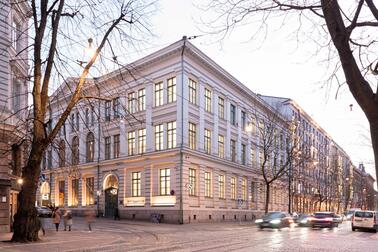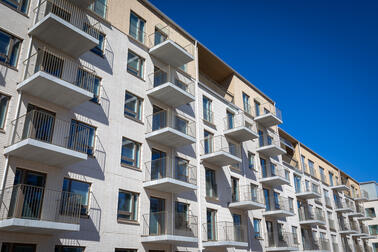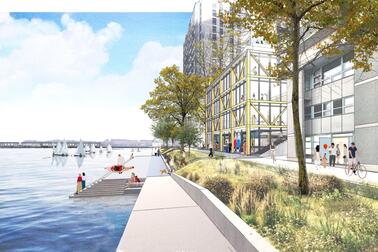
“Strengthening the vitality of the city centre is one of the city’s key objectives. At the heart of this vitality are people. That is why we are taking determined steps to accelerate both residential and commercial construction in the city centre. By bringing more people into the area, we contribute to maintaining its vibrancy and appeal for both Helsinki residents and visitors alike,” says Mayor of Helsinki Juhana Vartiainen.
Helsinki is currently preparing an action plan outlining how significant new housing and commercial spaces can be built in the city centre. This plan explores opportunities for infill construction through upcoming land use planning, conversions and block densification.
Major construction areas in and around the city centre
Several large-scale development projects are already underway or in planning in and near the city centre. The former port areas of Jätkäsaari and Kalasatama will continue to grow for several more years, and the planning of Hernesaari is also well advanced. Other potential development areas include the Aurora Hospital area, the Teollisuuskatu corridor, Hakaniemi, Eteläsatama (South Harbour), Katajanokka and the Savonkatu area. Now, the focus is also on assessing the potential of the city centre.
Housing construction can also be expanded beyond Helsinki’s major neighbourhood development areas. There are multiple opportunities for densification. New buildings can be added to the courtyards of older city blocks or other available spaces within blocks. Buildings can also be extended upwards, and attics can be used to build new apartments. In some cases, selective demolition and redevelopment may be an option. A few completely new construction sites can also be identified near the city centre.
Attic construction as an effective solution
Helsinki has long encouraged attic construction through a regional derogation decision and clear guidelines to facilitate the implementation of such projects. Many older buildings in central Helsinki with high attic spaces have already been used for this type of construction. While numerous projects have been completed, attic construction still offers significant potential.
“The attic construction model has proven highly effective. Typically, projects result in three large apartments being added to the attic of a single building, making highly efficient use of available space,” explains Architect Tytti Wiinikka from the City of Helsinki’s Urban Environment Division.
Office conversions for residential use to continue
Another strategy for increasing housing in the city centre is conversions, which means that an existing building is transformed entirely for a new purpose, or part of a building is repurposed for a new use, resulting in a mixed-use building. For example, old office buildings can be converted into residential buildings.
“Over the last few years, conversions have taken place steadily. Since 2015, approximately 200,000 square metres of new residential space have been created in Helsinki through detailed plan changes. Many office buildings have been converted for residential use, particularly close to the city centre. Moving forward, we aim to approach these conversions with greater flexibility, potentially creating a significant amount of new housing production in the city centre,” says Land Use Director Rikhard Manninen.
High occupancy rates for office spaces in the city centre
Helsinki is also reinforcing its city centre as a business hub. Occupancy rates of commercial spaces in the inner city are currently higher than the Helsinki average. According to 2023 statistics, the occupancy rate for offices in the central business district (CBD) and surrounding central areas was 91% on average.
The city centre and its surroundings offer extensive opportunities for new commercial construction. Major upcoming projects include the Maria start-up campus, Hietalahdenranta, the Eteläsatama (South Harbour) area and Elielinaukio square.
Ensuring public services and smooth mobility
Increasing housing and commercial construction alone is not enough to maintain the city centre’s attractiveness. As the number of residents grows, the availability of public services – especially schools, daycare centres and health services – must be ensured. Green spaces must also be preserved, and densification cannot come at the expense of parks.
“Successful solutions must be functional not only physically but also economically and socially. We need to invest in the quality and safety of public spaces, as well as in ensuring smooth mobility in the city centre,” Wiinikka reflects.
The Helsinki City Board received an update on the matter in a morning briefing on Thursday, 30 January.


